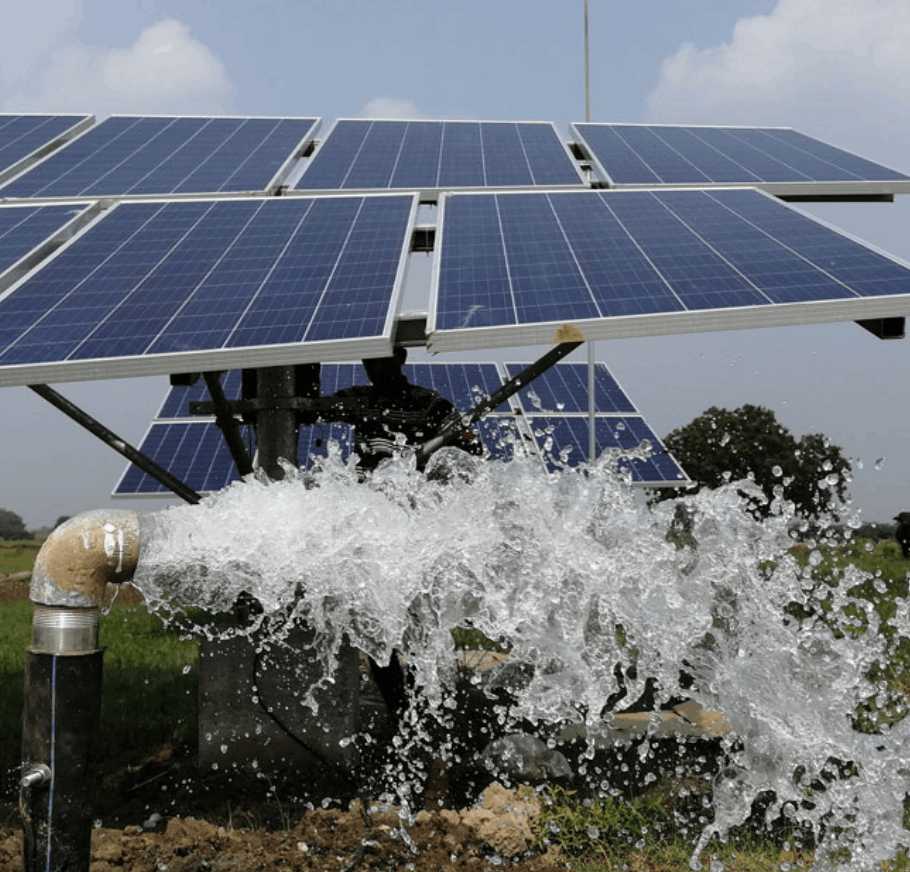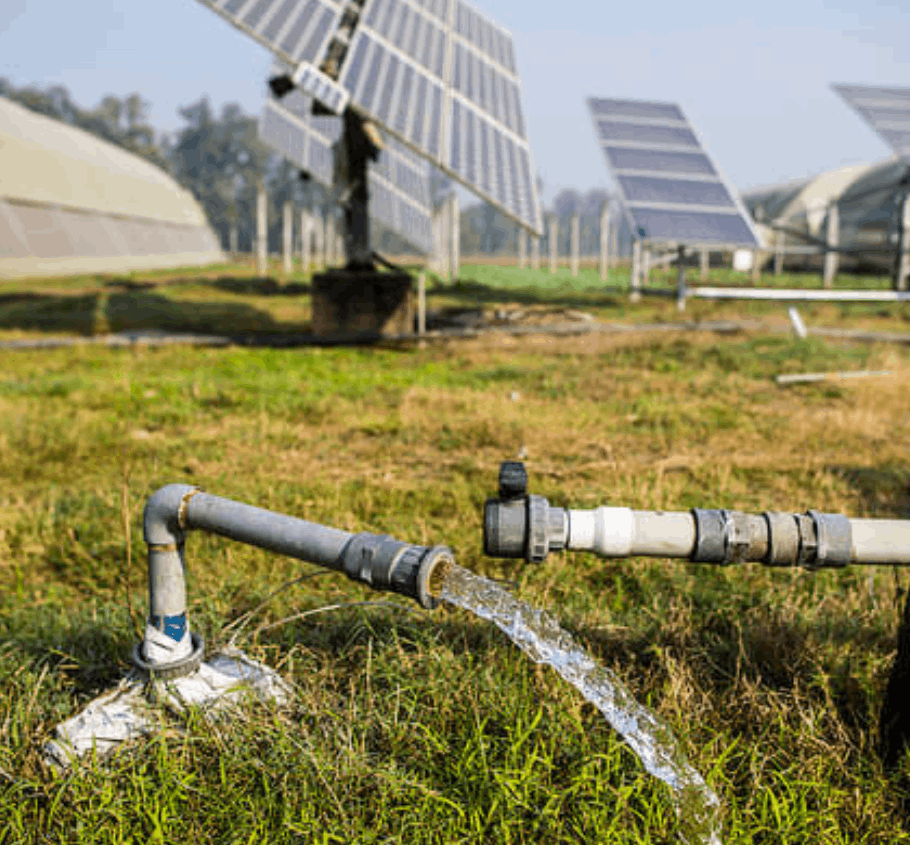
Products & Services
Solar Water Pumps

Solar water pump is driven by the electricity produced by the PV (photovoltaic) panels or the radiant heat generated by collected sunlight. This is the opposite of a diesel or grid electricity water pump.
The solar powered pump uses solar energy for operation. It consists of a water storage tank, electrical cables, a breaker/fuse box, a DC water pump, a solar charge controller (MPPT), and a solar panel array.
A solar powered water pump is more efficient to operate. These pumps have low maintenance and installation costs.
Solar pumps have a lower environmental impact compared to pumps powered by IC engines or utility electricity. The pump with a solar system is a delightful technology with which remote areas can be supplied with water both ecologically and socially. Therefore, it is always the economic technology of choice.
Solar water pump is driven by the electricity produced by the PV (photovoltaic) panels or the radiant heat generated by collected sunlight. This is the opposite of a diesel or grid electricity water pump.
The solar powered pump uses solar energy for operation. It consists of a water storage tank, electrical cables, a breaker/fuse box, a DC water pump, a solar charge controller (MPPT), and a solar panel array.
A solar powered water pump is more efficient to operate. These pumps have low maintenance and installation costs.
Solar pumps have a lower environmental impact compared to pumps powered by IC engines or utility electricity. The pump with a solar system is a delightful technology with which remote areas can be supplied with water both ecologically and socially. Therefore, it is always the economic technology of choice.
Components of Solar Water Pump System
The solar system has the following major parts:
1) Water Pump
A water pump is an important part of a water pumping system. These pumps have various types such as sump pump, booster pump, circulating pump, and submersible pump.
- Submersible Pump: The submersible pumps pump water from deep depth, e.g., underground water sources such as shallow wells and boreholes.
- Circulator Pump: These pumps circulate the water to keep it warm and prepared for utilization and ensure a continuous water supply.
- Booster Pump: The booster pump provides the pressure needed to pump water from a storage tank and deliver it to the entire home or facility.
2) Solar Panels
Solar panels are a key part of the solar-powered water pump. A group of solar panels is called an array. Solar panels generate electrical energy by separating electrons from atoms by permitting photons and light arrays, which creates electricity.
Solar panels are made up of small units called solar cells that change sunlight into electrical energy. There are several types of solar energy technologies like concentrated solar energy and solar thermal. These work differently than PV solar panels. However, these also use the energy of sunlight to generate electricity to drive water pumps.
3) Solar Batteries
The battery of the solar powered water pump system stores the charge produced by the solar panel; in the presence of sunlight, the energy produced by the solar panel supplies to a load and a battery.
If the load requirement is greater compared to the energy obtained by the solar panels, these batteries deliver a stable source of energy to the pumping system. The battery ensures that the water pumping system is working in the sunlight or not.
Deep cycle batteries often use for solar energy purposes because they are repetitively and deeply discharged.
4) Pump Controllers
The pump controller can adjust the pump system parameters to meet user needs and shield the pump system. These can use for the water to set an extraction schedule. The scheduled water helps to maximize the pump life.
5) Inverters
The inverter converts DC into AC. The transformation of direct current to alternating current is required for a wide variety of electrical equipment involving water pumps. Therefore, the inverter is an important part of the solar water pump system. But, using a DC pump removes the need for an inverter.
In cloudy or dark weather, the inverter becomes a high-performance backup source of energy; due to that, the pump can continue to run without solar energy or sunlight.

Advantages of Solar Pump
- The solar pump has an easy installation.
- It requires less maintenance.
- It has low operating costs.
- The solar systems work without fuel.
- Solar water pumps are easy to move.
- It doesn’s require regular utility power.
- It can also use in remote areas.
- These pumps have high durability and performance.
- They have Strong design.
- Long service life
- These have easy maintenance and use.
- Simple installation.
- These are environmentally friendly pumps.

What is the difference between Solar Pump and Diesel Pump?
| Diesel Pump | Solar Pump |
| Continuous Investment in diesel & operations | One Time Investment |
| It generates pollution | It has Zero noise and ecological noise |
| Its maintenance is expensive | Zero working costs |
| Short life | Long Life |
| Rising diesel prices are a constant burden | It has not Inflation fees |
| Diesel pump generate high noise | Its operation is very quiet |
| Continuous Manpower need | Independent Operation |
| Environment Pollution | Environment Friendly |
